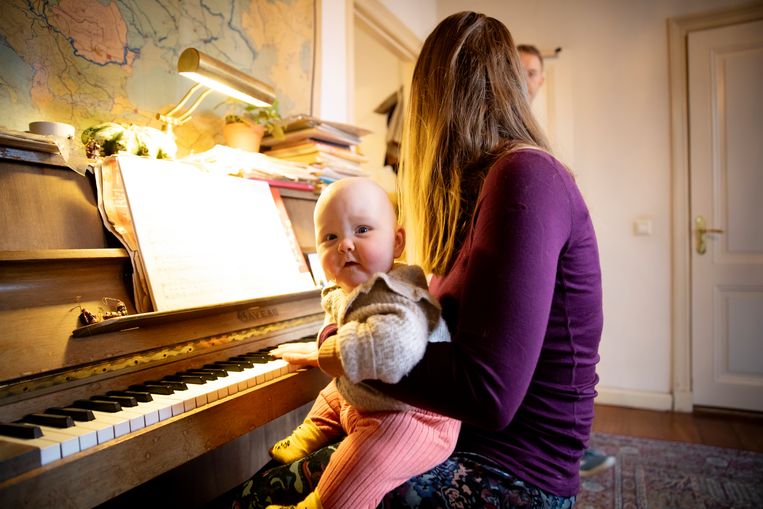Newborn babies have musical talent. They cannot yet sing, dance or whistle, but from day two they can hear and recognize the pulse – the regularity in the music. This is evidenced by recent research conducted by the University of Amsterdam (UvA) and the HUN-REN Research Center in Hungary.
This skill is essential for making and enjoying music. “If you don’t have a sense of time, you won’t be able to make music with someone else,” says Professor of Music Cognition (UvA) Henkjan Honing, who participated in the research. “Then you can’t dance together.”
The evolutionary role of music
It has long been thought that musical skills, such as sense of time, are learned by humans. New research shows the opposite: Perceiving the rhythm of music is innate.
Honing says people’s innate sense of time suggests that perceiving and making music has an evolutionary history. “It’s in our genes, so we as a species are better adapted to a given situation and can therefore survive better.”
Previous studies have shown that a sense of rhythm is important when learning a language. In addition, there are theories that state that music contributes to relationships between groups of people. “Syncing to the music is a way to show that you are a close group and working together,” Honing explains. “The other explanation is that music makes people feel each other more because they can jump up and down together.” According to the professor, for example, there are experiments showing that moving together rhythmically makes people more empathetic.
Sleeping during drum beats
The researchers had 27 children listen to different drum rhythms using headphones while they slept. In one rhythm, the time between sounds was the same – then a pulse or beat could be heard in the rhythm. The other rhythm was the same drum pattern, but with random timing between the different sounds. There was no regularity here.
While playing drum beats, the researchers looked at the children’s brain activity. They saw that they perceive rhythm only when the time between sounds is the same. When there was a random interval between drum beats (and thus no pulse), the children did not feel any pulse. This indicates that the ability to recognize rhythm does not arise from learning a specific rhythm, which has long been a criticism of previous research on children’s sense of rhythm.
Children and cockatoos dancing
Although newborns can hear rhythm, they cannot move rhythmically to the music. When they are about three months old, they can automatically move to music.
“You can see that in adults, too,” Honing says. “If you put someone in a scanner and have them listen to James Brown, the motor cortex is quite active, whereas you can’t move in the scanner.” The motor cortex is the part of the brain responsible for movement. There is a connection between this area of the brain and the part that deals with sound. That’s why, according to Honing, children sometimes move on to music when they’re old enough to control their muscles.
Humans may not be the only ones born with a sense of size. A world-famous example of a dancing animal is the sulphur-crested parakeet called the Snowball. “The bird became world famous in 2009 because it could dance to the tunes of the Backstreet Boys.” Snowball is believed to be the first non-human animal that could sense rhythm and synchronize his body with it. The parrot holds the world record for most dance moves performed by a bird.
Read also:
Why are people the way they are? Maybe singing parrots can tell that
Humans are very musical – at least, compared to other species. “We can clearly hear whether the tone is lower or higher.” Explains biologist Michelle Spierings from Leiden University.

“Coffee buff. Twitter fanatic. Tv practitioner. Social media advocate. Pop culture ninja.”











More Stories
“Ask at least one question in return.”
According to research, people with this sleep rhythm live longer.
13 municipalities in the province of Seville have mosquitoes carrying the Nile virus